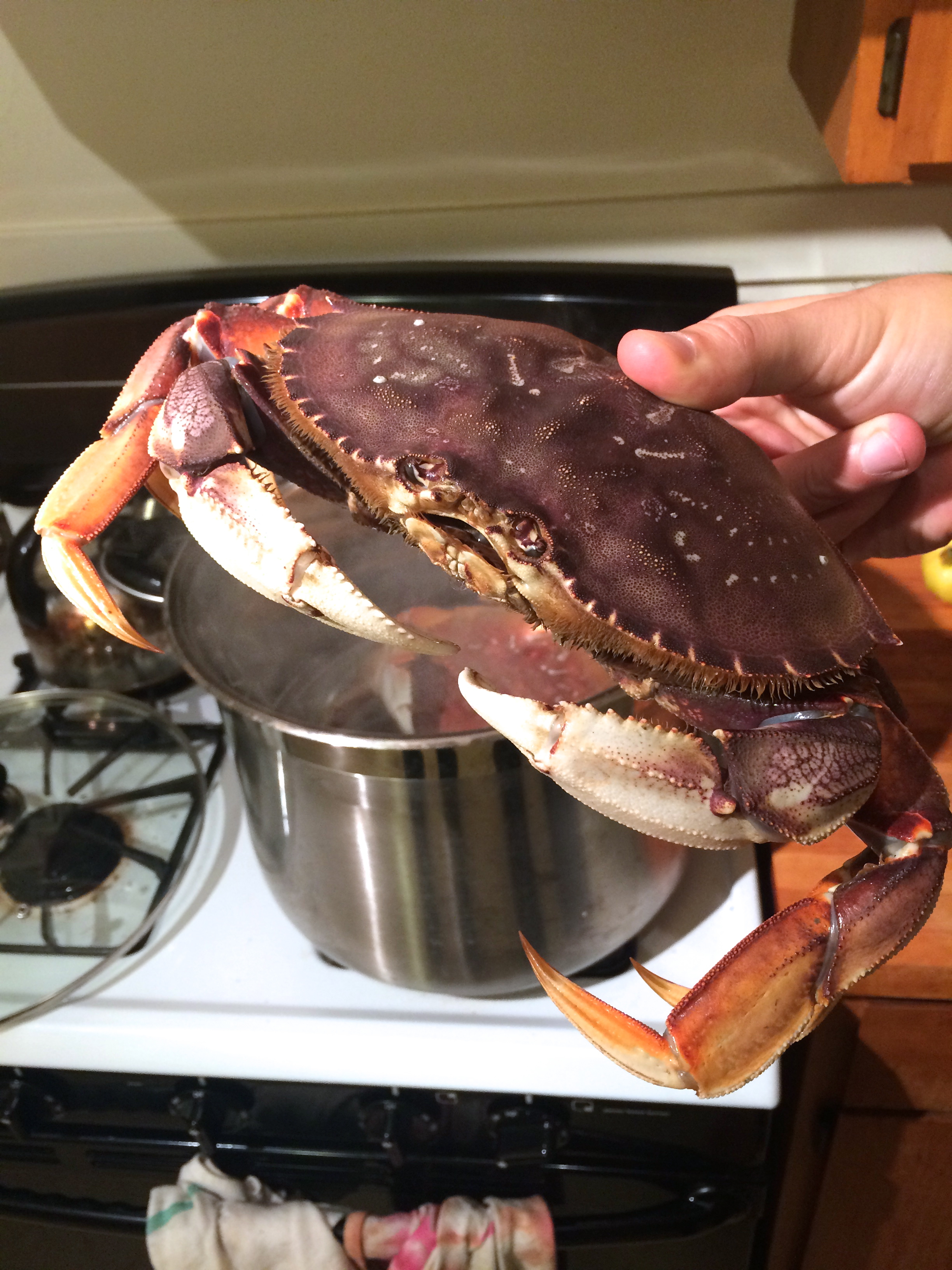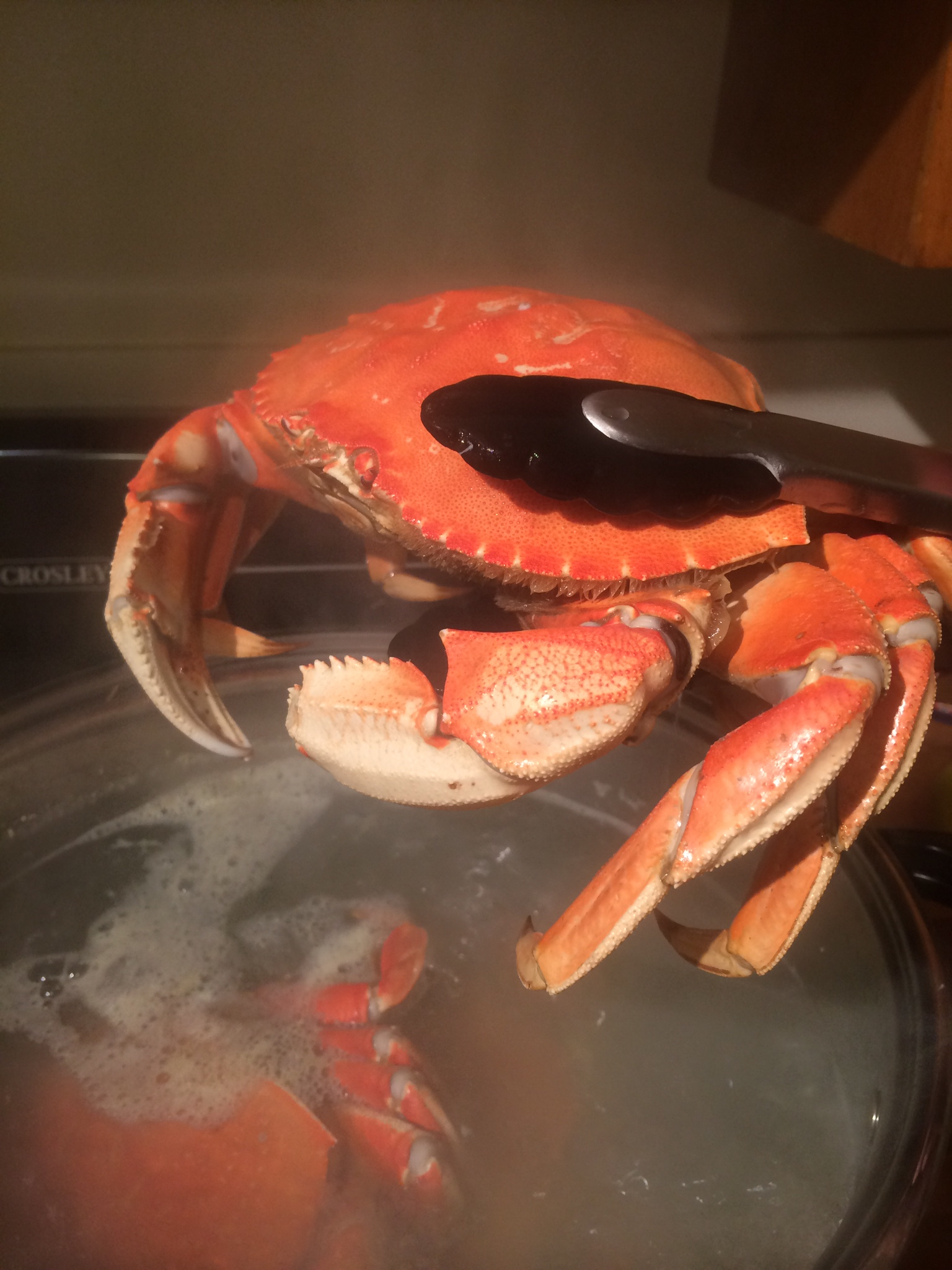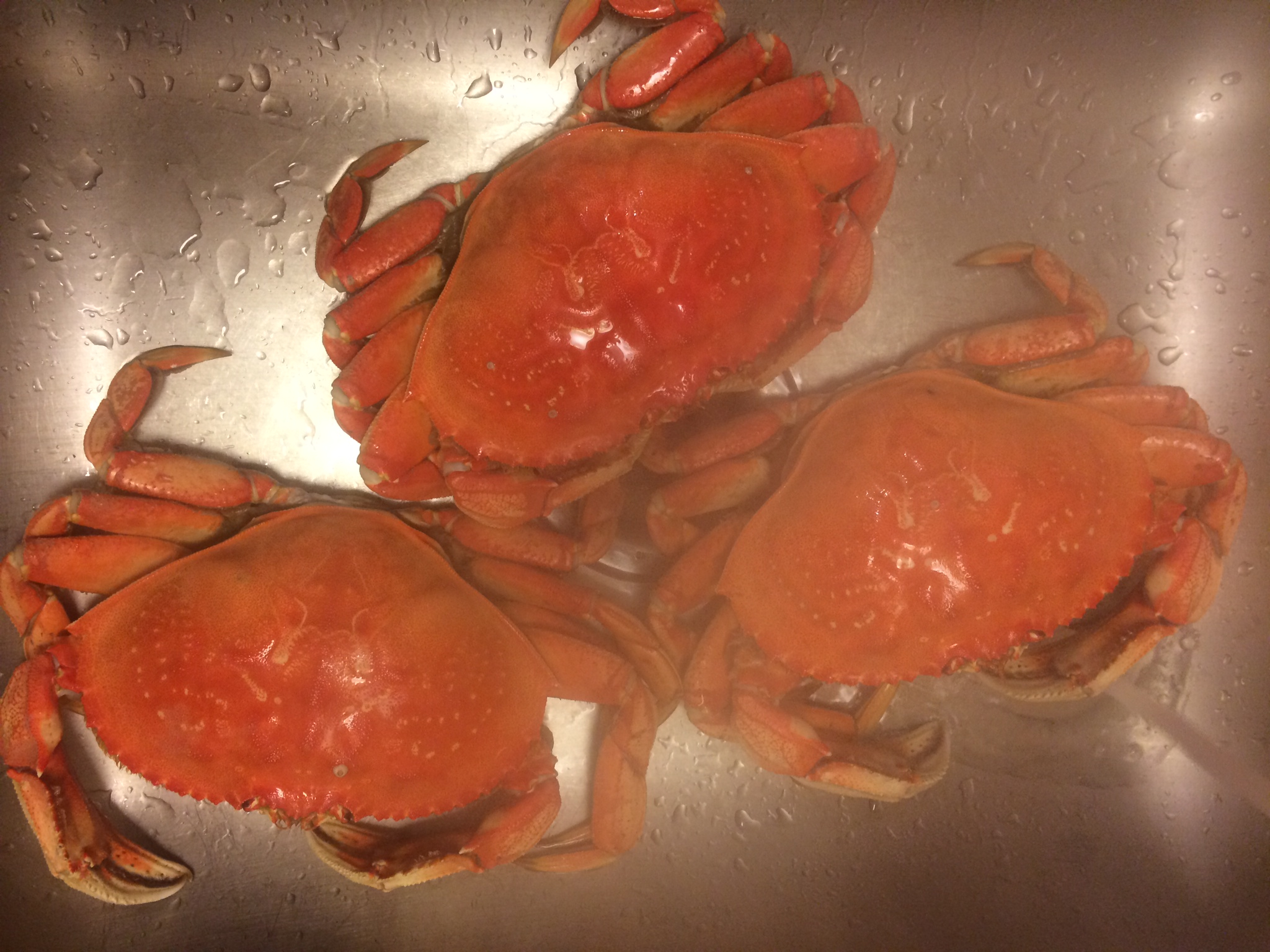Fresh Crab with Wood Sorrel-Cilantro Sauce
Crab season is one of my favorite seasons of the year. I love the fact that we still rely on fishermen and women to brave the seas in order to bring us these delicious crustaceans. Growing up in Humboldt County, my family lived near a crab stand that purported the clever phrase of "ocean strawberries" on their sign and I like to think of them as a cross between this elegant description and giant bugs.
In our house crab alone was special enough and accompaniments didn't go beyond melted butter and crusty bread. Although I still agree that crab is special enough, I wanted to take advantage of the wild wood sorrel prevalent in my neighborhood by making a vibrant and spicy dipping sauce of wood sorrel, cilantro, serrano, and sesame.
“Many plants, including wood sorrel, contain oxalic acid, which can be toxic in large quantities. Remember to enjoy in moderation.”

Wood sorrel looks like clover, but with yellow flowers on long stems. These are the somewhat fleshy flower stems you may have chewed on as a child walking around town (at least I did) to release their sour juices. The juice or ground leaves can be used as a unique way to provide a lemony kick to sauces or as a bright garnish - a little goes a very long way. Wood sorrel is high in Vitamin C and some use the plant medicinally for liver and digestive issues, but these latter benefits are not confirmed by research. The reason why wood sorrel is so lemony is due to its oxalic acid content, which can be toxic if eaten in large quantities and those with kidney or intestinal problems and pregnant women should avoid it. However, other plants contain oxalic acid as well so the general rule of thumb it to eat wood sorrel in moderation, meaning using some in sauce or as a part of a salad or garnish every once in a while is fine, and consume in combination with a balanced diet. There are also no dangerous look alikes for wood sorrel, making it a great foraged food for newbies! The below recipe serves 4.
2-4 fresh crabs (2 for half a crab each, 4 for heavy crab eaters)
1/2 cup wood sorrel leaves
2 serrano peppers, chopped with seeds removed
1 cup cilantro, chopped
Juice from 1/2 lemon
1 tablespoon ponzu (can substitute 1 teaspoon soy sauce + 2 teaspoons water if needed)
1 teaspoon yellow miso
1-2 tablespoons toasted sesame oil
Cooking and cleaning the crab: Go here for more information and step-by-step photos.



Get a large pot of water to a rolling boil. There should be enough water to cover the crabs. Throw your crabs in and cook them for ~7-8 minutes per pound. That's 7-8 minutes for the average weight of the crabs, not total weight. So, if I have 2 crabs that weigh 1.5 pounds and 2 pounds respectively, I should cook them for about 12-14 minutes. Round down when possible, as you can always cook the crab more if needed, but crab cooking is pretty forgivable. The crabs will change from a purplish color to a bright orange-red.
Remove crabs and rinse under cool water until cool enough to handle.
“Protip: All crabs available to eat are male, as the female are thrown back in to encourage population growth. ”
Turn the crab upside down. Stick your finger underneath the "apron" (little tail looking thing) and pull it off. Remove the carapace (large back shell) by putting finger in hole where apron was and ripping the back shell from the legs. It's actually pretty easy and fun.
Rinse off or save the guts (yellow gushy stuff) found in the carapace. The guts can be eaten on rice, in a stew, or on their own if desired.
Remove the gills (spongy soft jagged things) from either side of the body as well as the mandible (sharp mouthparts in the front).
Give the body a final rinse - remove the greenish-brown and yellow goop - and break the body in half if desired. Serve at room temperature or cold with wood sorrel sauce (below).
To make the wood sorrel sauce: Simply blend all ingredients except sesame oil in a food processor or immersion blender. Drizzle in sesame oil until desired flavor and consistency is achieved.
Here's a quick video demonstrating how to clean a Dungeness Crab:

